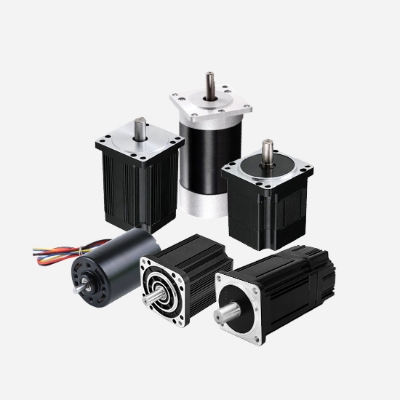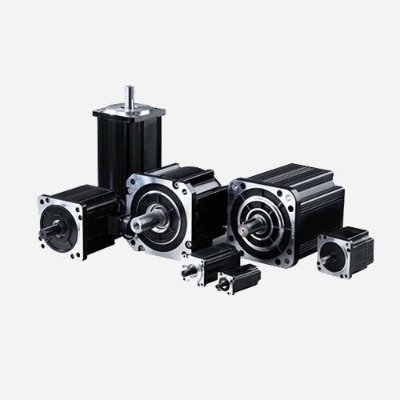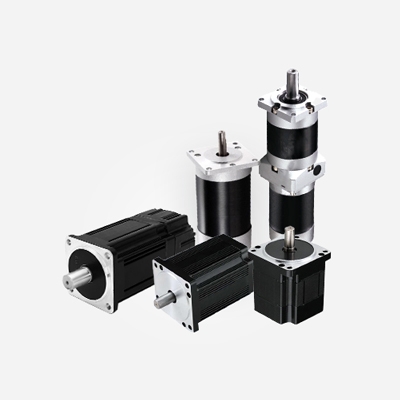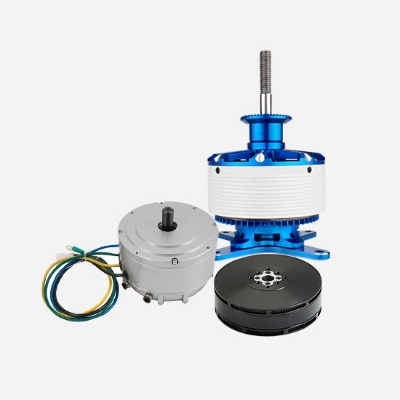Brushless motor technology is a breakthrough in modern engineering and is widely used in a variety of applications, with brushless gear motors and brushless DC motors being two of its common types. There are significant differences between them in terms of performance, applications, and working principles, In this article, Brushless.com will give you a detailed introduction to both motor types.
Differences in Construction and Systems
Brushless Gear Motor: Brushless gear motors contain a gear train inside. Typically, it consists of a motor body, stator, rotor, and gearbox. The motor body includes the stator and the rotor of the brushless DC motor, which is usually a permanent magnet. The gearbox is connected to the output shaft of the brushless gear motor and is used to adjust the output torque and speed. Brushless gear motors are controlled by an electronic controller to control the output of the gear train.

The most notable feature of a brushless gear motor is the gear train, which allows the output speed and torque to be adjusted through different gear ratios. This allows brushless gear motors to excel in applications that require high torque and low speed, such as mechanical devices and automation systems.
BLDC Motors: Brushless DC motors typically do not include a gear train. Brushless DC motors are simpler in construction, consisting of a motor body, stator, and rotor. The BLDC motor body still includes permanent magnets and the rotor of the brushless DC motor. Unlike a brushless gear motor, its output shaft is connected directly to the load with no additional drive components. Brushless DC motors are usually controlled more directly to adjust current and voltage for speed and torque.
Brushless DC motors typically have no gear train and their output shaft is connected directly to the load. This design gives brushless motors an advantage in speed response and high-speed applications such as flying machines, power tools, and remote control models.
Differences in Working Principles
Brushless Gear Motor: The main difference between a brushless gear motor and a brushless motor is the presence of a gear train. The gear train usually consists of gears and shafts that are connected to the output shaft of the motor. The brushless gear motor generates a rotational torque that transfers power to the output shaft. The gear train converts the high-speed, low-torque output of the brushless gear motor to a low-speed, high-torque output.
This is useful for applications that require precise control and higher torque. The output shaft transmits power to an external device that performs the required mechanical work. Unlike BLDC motors, brushless gear motors include a gear train. This gear train connects the output shaft of the motor to an external load, which varies the torque and speed of the output. The gear train transmits power through the mutual meshing of gears.

Brushless DC Motor: Brushless DC motors, also known as brushless DC motors or BLDC motors, generate rotational power by alternately turning on and off an electric current. A brushless DC motor consists of a motor body and a driver and is a typical mechatronic product. The stator winding of the brushless DC motor is mostly made into a three-phase symmetrical star connection, which is very similar to a three-phase asynchronous motor. The rotor of the BLDC motor is glued with magnetized permanent magnets, and to detect the polarity of the rotor of the BLCD motor, a position sensor is installed in the motor.
The driver consists of power electronics integrated circuits, etc. Its function is: To accept the motor start, stop, and brake signals to control the motor start, stop, and brake. Accept the position sensor signal and forward and reverse signals, which are used to control the on and off of each power tube of the inverter bridge to generate continuous torque. Accepts speed command and speed feedback signals for controlling and adjusting the rotational speed, providing protection and display, and so on.
Both brushless DC motors and brushless gear motors rely on current control and magnetic field interactions to generate mechanical torque, but high quality brushless gear motors increase torque and decrease speed through a gear train to meet the needs of different applications. Electronic controllers are key to ensuring that the motor operates in the desired manner.
Differences in Performance Characteristics
Brushless Gear Motors
- High Torque: Brushless gear motors can provide higher torque through the gear train for applications that require high torque, such as industrial machinery and automation systems.
- Accuracy: Brushless gear motors can provide more accurate position and speed control due to the gear train.
- Efficiency: Brushless gear motors are typically slightly less efficient than brushless motors because of the additional power loss that may be introduced by the gear train.

Brushless DC Motors
- High Speed: Brushless DC motors typically have high rotational speeds, making them suitable for applications that require fast response times, such as flying machines and RC models.
- Flexibility: Brushless DC motors allow for easy speed control because they do not have the speed limitations of a gear system.
- Efficiency: Brushless DC motors typically have high efficiency because they do not have the power loss of a gear system.
Differences in Application Areas
Brushless Gear Motor Applications
- Industrial Machinery: Brushless gear motors are used to drive a wide range of industrial machinery such as robotic arms, conveyor belts, and machine tools as they can provide the high torque required.
- Automation Systems: Automated production lines and robotic systems often use brushless gear motors for high accuracy and reliability.
- High Precision Positioning Systems: Applications that require a high degree of accuracy and adjustable speed, such as telescopes, astronomical scopes, and camera mounts, often use brushless gear motors.
Brushless DC Motor Applications
- Drones and Flying Machines: Brushless DC motors are widely used in drones and other flying machines due to their high speed and flexibility.
- Power Tools: Brushless DC motors excel in power tools, providing high performance and durability.
- RC Models: Models such as RC cars, airplanes, and boats often use brushless DC motors for high speed and agility.
To summarize, brushless DC motors and brushless gear motors differ significantly in terms of performance, applications, and operating principles. The choice of which type of motor to use depends on the specific application requirements, including the required torque, speed, accuracy, and efficiency. Brushless DC motors are suitable for applications requiring high speed and agility, while brushless gear motors are suitable for applications requiring high torque and precise position control.




